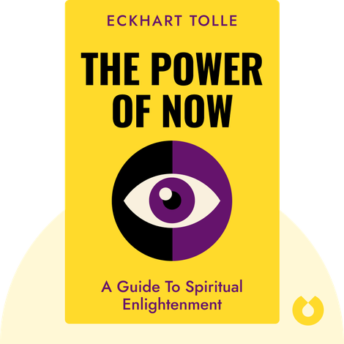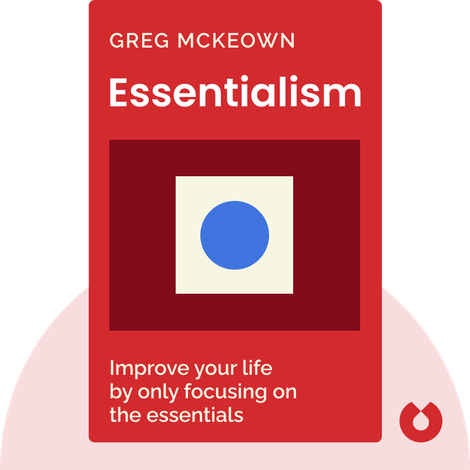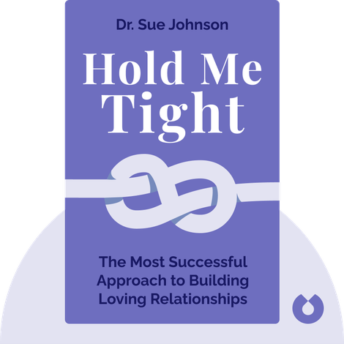فهرست مطالب
خلاصه صوتی (بلینکیست)
Atlas of the Heart: Mapping Meaningful Connection and the Language of Human Experience
Introduction
Imagine you’re stumbling around in the dark, in an unfamiliar city, trying to find your way to a bright light twinkling on a distant hill. You see dark shapes that you think you recognize, but you’re not quite sure what they are.You know you want to get to that light, but the way there involves crossing deep gorges and climbing menacing hills. And there’s no clear path in sight.
You might feel lost like this – without a clear sense of where you really are in your emotional landscape. You might struggle to even name your feelings. Or to understand feelings that come on strongly. Like why is it that that particular person always pushes your buttons? Is there a deeper meaning to the emotions that you’re feeling, or is it just a sign that you need to get some rest?
You want to understand, but the answers to those questions lie just out of reach, in that foggy darkness. And in your search for answers, you’re rocked by emotions, blown off course, left feeling lost and bewildered, and sometimes in despair. You know you want to get to a place where you feel grounded, and content – but it seems elusive, like that bright light on the hill: always around that next bend, never coming closer in view.
Nowadays, it’s becoming more common to talk about emotions. Talk shows now use words like “trauma” regularly, and we can talk about experiences of vulnerability and depression much more openly than we used to. But do we really understand what these words mean? Can we recognize the difference between joy and happiness? What about shame and guilt?
We still have so much to learn about emotions. And that’s where Brené Brown comes in: she’s able to offer clarity on the things that shape our lives.
In these blinks, we’ll gain some orientation of our emotional landscapes with an atlas – the Atlas of the Heart. We’ll learn how to start navigating our feelings with more nuance and more clarity. So, let’s get into it!
In these blinks, you’ll learn
- why hopelessness and despair are the most dangerous emotions you can experience;
- How understanding your emotions will transform your relationships; and
- why happiness and joy are not the same.
Key idea 1 of 9
A child with magic powers.
Growing up, Brené Brown was sure she had magic powers – that she could predict the future, and make connections no one else around her could.
She remembers how her high-school swim coach had an explosive temper, and that all her classmates were terrified of him. They couldn’t quite figure out why he would suddenly get so angry all the time. But Brené knew. She’d noticed he’d freak out when people weren’t trying hard in practice. It didn’t matter how talented you were – if you weren’t one hundred percent committed to improvement, you’d set him off. On the other hand, if he saw you were taking the practice seriously, he’d never get angry at you, even if you were a mediocre swimmer. And he loved the backstroke.
So, Brené worked on her backstroke. In order to stay under the radar and not piss off her teacher, she gave it her all.
Staying under the radar was the main function of the heightened levels of awareness she’d developed as a kid – what felt like her magic powers. It helped her navigate her home life, with her complicated parents. In public, her parents were sociable, kind, and fun. But, behind closed doors at home, their behavior was unpredictable. Their moods would swing wildly, and they could get pretty angry without much, if any, warning. It was confusing,and it made Brené and her four siblings feel ashamed. After all, their parents only behaved like this when they were at home – so it was only natural that it made Brené and her siblings feel it was their fault that they got so upset. On top of that, Brené was the oldest of the kids, so she felt like it was her job to protect everyone else from their outbursts.
And so she became very observant. She learned to identify people’s soft spots, or what she now calls everyone’s “shame triggers” – like the ill-timed jokes or misjudged requests that might set someone off.
Besides just her parents, she began to notice how other adults around her would channel their anger into everyday moments, like watching sports or road rage. She understood that those situations were often completely unrelated to what was really making them angry.
At the time, Brené didn’t know what to do with all this emotional awareness. Nobody at home talked about their feelings, or expressed them much at all. The only acceptable emotion was anger – and just because Brené could predict the outbursts, it wasn’t any less painful when she was on the receiving end of them.
Of course, emotional awareness is precisely what Brené Brown is known for today. It’s a superpower she’s honed over a stellar career, and a skill she passes on in Atlas of the Heart.
Key idea 2 of 9
You can’t stop walking on eggshells if they’re taped to your feet.
We often say that someone who’s very sensitive to other people’s moods or reactions is walking on eggshells. In her own words, Brené felt like the eggshells were “duct-taped to the soles of her shoes.” She was hypersensitive to the world around her – so attuned to what might go wrong that it felt excruciating.
She tried drowning out those feelings through partying, smoking, and drinking. And while all of that did succeed in numbing her, it also meant the world got blurry. She could no longer observe what was going on inside of people. She was fearful and anxious, and was so scared of feeling pain that she chased experiences that made her feel even more pain. She was, as she says, “taking the edge off” through alcohol. But taking that edge off was also muffling her magic – her superpower.
Recognizing this, with the help of a good therapist, Brené started a long, hard process of regaining her edge. She stopped drinking, and started learning how to feel again, how to embrace pain and messy vulnerability and feelings that are not exactly pleasant or easy to experience.
Today, Brené values her sensitivity to emotions. It shows her where her boundaries are. It teaches her what she needs. It allows her to tune into the people around her. And it’s fueled quite an extraordinary career.
With Atlas of the Heartshe created a guide for people who, like her, are scared of pain. People who feel all the things, but don’t know what to do with their intense emotions. People who want to find another way to relate to others when they’re fearful. People who are yearning for vulnerability.
So, let’s start exploring this atlas in greater detail. The book itself covers 87 emotions. We’re going to take a closer look at just a few of these. And though the emotions are very common, you just might be surprised about what’s actually underlying them.
Key idea 3 of 9
Expand your emotional vocabulary.
But hang on. Is there a point to all of this? We can’t all be world renowned emotions experts like Brené, so why should the rest of us spend the time learning more about our feelings?
Well, consider this. Imagine you have a sharp, shooting pain in your shoulder. It’s excruciating and won’t go away, and it’s starting to get in the way of your life. So, you rush to the emergency room. A kind, caring doctor comes in and tries to find out what’s wrong. As you start to tell her, something strange happens: you can’t get any words out. You can only point to the general part of your body where the pain is occurring, but you can’t pinpoint the exact location. So she can’t help you. You’re frustrated, and your shoulder continues to hurt.
The point is . . . language is important. It’s a bridge between ourselves and other people – It allows us to express how we’re feeling, and, crucially, get the help we need. But when it comes to emotions, most of us are just like that person with the painful shoulder. We just don’t have the words to describe what’s happening in us to others . . . or to even understand it for ourselves. Here’s something fascinating: Brené describes how she and a team of researchers asked 7,000 people to identify all the emotions they experienced. And guess what? The average number of emotions people listed were – wait for it – three: sad, angry, and happy. That’s it: mad, sad, glad. Of all the emotions in the world, all the nuance of human experience, most people could only describe them in three categories.
And the reason that’s a problem is just like the painful shoulder: it’s as if you could only tell the doctor that you have a pain somewhere in the upper half of your body. And you could only describe that pain as “bad,” instead of say, that it’s throbbing, or aching, or shooting pain.
The ability to have the awareness of, and the precise language to describe your emotions is what researchers call “emotional granularity.” This granularity can benefit your life in many ways.
Having the right words allows you to identify your feelings and figure out where they come from. And if you can identify your triggers, you’ll be much better equipped to find ways to comfort yourself.
Brené believes that having those insights into your emotional states allows you to feel connected to yourself, instead of feeling numb and disembodied. And that connection with the self creates the foundation for genuine, loving connections with other people.
Perhaps most importantly, being able to precisely articulate your feelings means that you’ll be able to ask for – and receive – the specific help that you need.
So let’s take two commonly discussed emotions – sadness and happiness – and see how expanding your emotional vocabulary will help you to better understand and navigate your inner landscape.
Key idea 4 of 9
Places you go when you’re hurting.
We’ve all been there, many times. Something happens that causes us to feel bad, and we usually describe the emotion we have in response as feeling sad. But what does that mean, exactly?
“Sad” is not the same as being depressed. Depression is a chronic condition, while sadness can be a fleeting feeling we experience in response to a particular situation.
Feeling sad is an important part of being human. It’s a natural reaction we have to loss or defeat – something we all experience. Because we all know sadness, we can recognize it in others and empathize with our friends when they’re hurting. Empathizing with your friend and making time for them comes from your own lived experience of sadness. Feeling sad allows you to feel alive, and connected to other people. It can also help us to make better decisions, because we become more sensitive to our surroundings.
Think about how popular sad movies are, and how satisfying it can be to cry on the couch in front of the TV. Those experiences make you feelmoved, and connected to other people.
So, this is what it means to feel sad. But there are other emotions and experiences that we have when we’re hurting that are very distinct, but are often lumped under the “sad” label. For example, people can experience anguish, or grief, or hopelessness, or despair. These emotions have very different qualities and require different reactions from us.
Key idea 5 of 9
Anguish comes for the bones.
Anguish. Anguish feels shocking, unexpected, and often traumatic. And it can hit us on a primal, physical level, too. This happened to Brené one day when she got a call from a childhood friend out of the blue. The friend told her that she’d felt suicidal due to a childhood trauma Brené didn’t know about. When she heard this from her friend, she physically crumpled to the floor.
In Brené’s words, anguish “comes for the bones” – it strikes us at our core. People are resilient, and can heal from this kind of trauma. But they need support. Otherwise, they may go through the motions, while remaining internally numb or “crumpled.” Or they may respond to the pain by becoming rigidly perfectionist, shutting out all vulnerability to try and stay upright. Good support allows you to experience the pain while learning how to rebuild your life. Some of the best support comes from body-centered therapies that address the physical manifestation of trauma in the body.
Anguish is sudden, and bewildering, and painful. But it’s not nearly as dangerous as two other emotions we can experience when we’re feeling bad: hopelessness and despair. These two are connected, but they’re not the same.
A feeling of hopelessness comes when you’re not able to set realistic goals for your life. If you do have a goal, you can’t figure out how to achieve it. And if you try and fail, you become discouraged and start beating yourself up. You have no faith in your own abilities, or sense that you have agency in your life.
While feeling hopeless often relates to a specific situation, like your relationship or finances, despair encompasses your entire life. It’s the feeling that your whole life is hopeless, and that it will never change. You’re stuck and can’t find a way out.
Feeling like this often leads to suicidal thoughts and attempts. If you’re in emotional pain, and feel like there’s no way out, then it makes a distorted kind of sense that ending your life is the only thing you can do, the only way to have some agency in the situation.
In order to strengthen your resilience in the face of hopelessness and despair, there are a number of important and practical things you can do, which is what we’ll find out in the next blink.
Key idea 6 of 9
Hope is a skill, not an emotion.
To combat hopelessness and despair, let’s start with hope. We think of hope as being a warm and fuzzy emotion. But that’s actually not true. In fact, being hopeful is a skill that you can learn. Being hopeful comes from being able to set realistic goals, figure out how to meet the goals and believe in your own abilities. Hope comes from encountering adversity, and discovering that you can be resilient in the face of it. To learn hopefulness, you need to practice setting goals that you can actually meet.
Even more important, you need to become comfortable with failure and be prepared to try new approaches if the first one doesn’t work. The best thing about learning to be hopeful is that it’s infectious. For example, researchers have shown that hopeful parents generally have hopeful children.
Apart from practicing your hopeful skills, you can also practice increasing your resilience by working with what researcher Martin Seligman calls “the 3 Ps”: personalization, permanence, and pervasiveness. In the last blink, we were talking about how despair feels all encompassing and permanent. People in that state often take it very personally, beating themselves up for failing or letting down their families.
When you’re feeling flooded by despair, stop to ask yourself the 3 Ps. First, personalization: if you’re taking it personally, ask yourself, “Is this situation really about me? What outside factors play a role that I haven’t accounted for?” If it feels like the situation will last forever – which is the second P, permanence – do a quick thought experiment, and ask yourself: “Will this be a big deal in five minutes? Or five days? Or five months?” And if it feels like the problem is pervasive and has consumed your whole life, take a moment to stop and really consider its impact. You may have screwed up at work, but does that really mean you’ve destroyed your family and all your friendships?
These strategies offer a pause button when you’re feeling flooded and overwhelmed. They offer your rational brain a chance to rejoin the party, and help you to put your experiences in perspective.
Sadness, anguish, and despair are all painful, and difficult. But they can also be incredible teachers. As resilient humans, it’s possible for all of us to move through these feelings, becoming more engaged and empathetic and courageously vulnerable as we do. But you can’t do it alone. You need to be able to ask for help, and get the right kind of help that’s appropriate to that specific emotion.
Key idea 7 of 9
Happiness and joy are not the same thing.
On the other side of the spectrum, there’s happiness. We all know what that word means, right? After all, how many love songs have been written about it?
Well, actually, even the most expert happiness researchers – people who spend their whole lives studying the emotion – can’t agree on exactly what it means. Most research to date has been about happiness as a trait, or part of who we are, rather than as a state – something we experience at times.
Even more confusingly, happiness is often conflated with joy. Those words are used interchangeably to describe a positive state. But in her research, Brené has discovered that, in fact, happiness and joy are very distinct.
Happiness is a long-lasting emotion that usually comes as a result of feeling in control. Happiness makes us focused on ourselves, or our own achievements.
Joy, on the other hand, comes on suddenly without warning. It’s short and fleeting, and very high intensity. It focuses our attention outwards, instead of inwards, and makes us feel connected to other people, or God, or the universe. It makes us feel free, and alive, and awake. Joy is intensely pleasurable, and is accompanied by a sense of gratitude and appreciation.
Joy is also a bit unsettling, even scary. Feeling joyful is so wonderful that it can make you feel vulnerable and afraid of losing that joy. Brené describes that experience as foreboding joy. It’s what happens when you watch your children while they’re sleeping, and feel an enormous stab of joy accompanied by a deep and irrational fear that something terrible will happen to them. It’s a way of rehearsing tragedy in your mind in an attempt to make it feel less painful when it actually happens because in the moment of joy you realize how much you actually have to lose.
Most of us are so used to foreboding joy that we don’t even consciously realize what we’re doing. We start to feel like it’s normal, or realisticto expect the worst. But living that way costs you the incredible benefits of freely experiencing joy.
There’s a man who Brené interviewed in her study on vulnerability who’d gone through his life expecting the worst, as a kind of emotional armor. And then the worst actually happened to him. His wife died in a car accident. He realized that his previously pessimistic outlook had done nothing to prepare him for that painful event. All it did was rob him of the ability to fully enjoy the time he’d had with his wife when she was alive.
To allow yourself to experience joy is to practice appreciating what you have, in the moment that you have it. In fact, researchers have found that joy and gratitude are linked, in what they describe as a positive “upwards spiral.” If gratitude is one of our traits, we’ll have more experiences of joy in the moment. If we’re joyous types, we’ll have more moments of feeling grateful. The emotions positively reinforce each other.
And, like so many emotions, gratitude can be practiced, and learned. Keeping a gratitude journal, or taking a moment each day to name one thing that you’re grateful for out loud, trains your brain to look for more similar experiences.
Key idea 8 of 9
Become comfortable with paradox.
Over the course of these blinks, we’ve traveled to two emotional places: where we go when we’re hurting, and some places we go when life is treating us well. As you’ve already discovered, there’s nothing simple about this inner exploration. The seemingly neat categories of “sad” and “happy” are bursting with nuance and contradictions.
We’ve gone over how sadness can make us feel good, and that happiness can be less rewarding than joy. We’ve discovered that emotions can lodge themselves in your body, as well as your mind. And that, to a surprising degree, you can influence how you feel by practicing skills like hopefulness.
Emotional granularity is messy. To go there, really go there, you need to get comfortable with paradoxes. Paradoxical elements seem opposite to each other. But, really, they’re linked. Like light and dark. One doesn’t really exist without the other.
As the navigator of your own emotions, you’ll need to become more and more comfortable with emotional paradoxes. How you crave closeness to others, but act in ways that shut yourself off; or how you can lead a board meeting with confidence, but crumple every time you need to speak to your mother.
Holding these paradoxes with warmth and curiosity will help you on your journey to discovering and celebrating the terrain of your own heart. Like any journey worth taking, there are no shortcuts. You’ll need to clamber over many obstacles, and find your sharp edges. Keep going. Lean into the messy stuff and contradictory stuff. Embrace the sheer vulnerability of being alive.
Key idea 9 of 9
The key message in these blinks is that:
Emotional granularity means being able to identify our emotions and experiences and express them to other people. The more nuanced and specific the words are that we have for emotions, the more expansive our inner worlds will be. Becoming attuned to our emotional states allows us to build loving relationships with ourselves, and the people around us.
And here’s some more actionable advice:
Take a time-out when you’re overwhelmed.
If you feel flooded by emotions like fear or anger, the rational part of your brain shuts down. That’s not a great state to be in during a fight, or in a situation where you need to make a decision. Build time-outs into your communication with people you love. When you’re overwhelmed, take some time by yourself to breathe deeply and process. When you’re feeling calmer, you can pick up where you left off.








